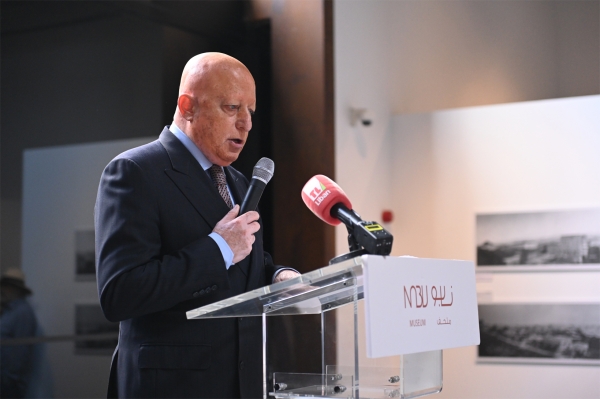Batroun, Ras Shaqaa and Msaylha Of History and Archeology - Hassan Salameh Sarkis
In this spirit, Dr. Sarkis has presented a holistic structure of the history of Batroun and its direct vicinity, hoping to accentuate the role that this town may have played throughout the ages.
During searches for the prehistory of Batroun, i.e. the stage of preliminary probing, flint tools were found in the vicinity of the town, indicating that ancient humans had passed through the area and had had seasonal stays there about 800 thousand years ago. Other tools dating back to the Middle Stone Age were also spotted but went missing during the Lebanese Civil War, not to mention that the spot overlooking Nahr el-Jawz (Walnut River) near the Msaylha Citadel was swept away.
In the second millennium BC, inscriptions in Akkadian- the language of diplomacy used in the Ancient Near East- revealed that the Amorites were planning to establish a city-state in their sphere of influence in order to counter pro-Egyptian states and which would have stretched between the present day Akkar valley to the north and the Great River to the south. In these inscriptions, the word BAT-RU-NA was mentioned at least ten times, alongside other cities within the Amurru Empire that were once under Egyptian control. Excavations indicate that no human settlements were present in Batroun prior to the second millennium BC. Mentions of Batroun, within the sphere of the city-state of Byblos, are to be found in nine letters, out of the 54 from the site of Tell Al-Amarna in middle Egypt, which contain the correspondence in which Rib-Addi, the mayor of Byblos, complained to the Egyptian Pharaoh about the Amorite attacks and stressed his exigent need for support.
During the classical Greek and Roman eras, Batroun was called ‘Botrys’, a Greek name, meaning a cluster of grapes, a name first used by Roman geographer Pomponius Mela in his description of the Phoenician coast. Clearly, Batroun did not receive special attention except in the times of the Severan Dynasty, when landmark monuments and temples were erected.
In the Byzantine era, the grammarian Hierocles drew up a guide containing lists of the 64 wilayas (provinces) of the empire. He mentions Batroun when he describes coastal Phoenicia, which he distinguishes from Lebanese or internal Phoenicia. Following the deadly earthquake that shook the region in the mid-6th century AD, Batroun was one of the cities which lay in absolute ruins and to which no prompt assistance was extended, as a higher priority was given to other major cities. This was evidenced by the trip taken by an anonymous pilgrim to the Holy Land between 560 and 570- nearly 20 days after the tremors- during which he remarked on the state of the coastal cities he crossed. The pilgrim spoke of Tripoli, then of Byblos but made no reference to Batroun. It seems that Batroun remained in a ruinous state until long after the Islamic conquests.
Batroun was part of the emirate of Banu Ammar who ruled Tripoli under the Fatimid state in the second half of the 11th century. It remained of little if any significance until the early 12th century when it fell under the Franks and became part of the County of Tripoli. At that time, Batroun produced the finest liquor in the region. To the north of the city, a small port was established for the boats, which were a rapid means for transporting messengers and informers between Beirut and its vicinity. Larger vessels and fleets would head to the bay located in the north.
After Sultan Saladin defeated the Franks at the battle of Hattin in 1187, Batroun fell under the Beni Assaf, then the Beni Sifa until 1618 when Prince Fakhreddine appointed Abi Nader Al-Khazen as ruler of Byblos and Batroun.
In the last two chapters, the author goes back to the vicinity of Batroun, touching on the Msaylha Fort and Ras Shaqaa, a promontory situated between Batroun and Tripoli. He notes that the latter is mentioned repeatedly in ancient sources under different names such as Euprosopon, Theouprosopon and Lithoprosopon. The landmark site served as a guide and point of reference for sailors, jutting out as a dark spot with Mount Makmel in the background. As for the Msaylha Fort, it was constructed on a rock at the center of Nahr El-Jawz valley and its watchtower was designed to guard the coastal route linking Batroun and Heri. Despite its importance as a strategic stronghold, researches held divergent views on its exact date of construction.








Leave A Comment